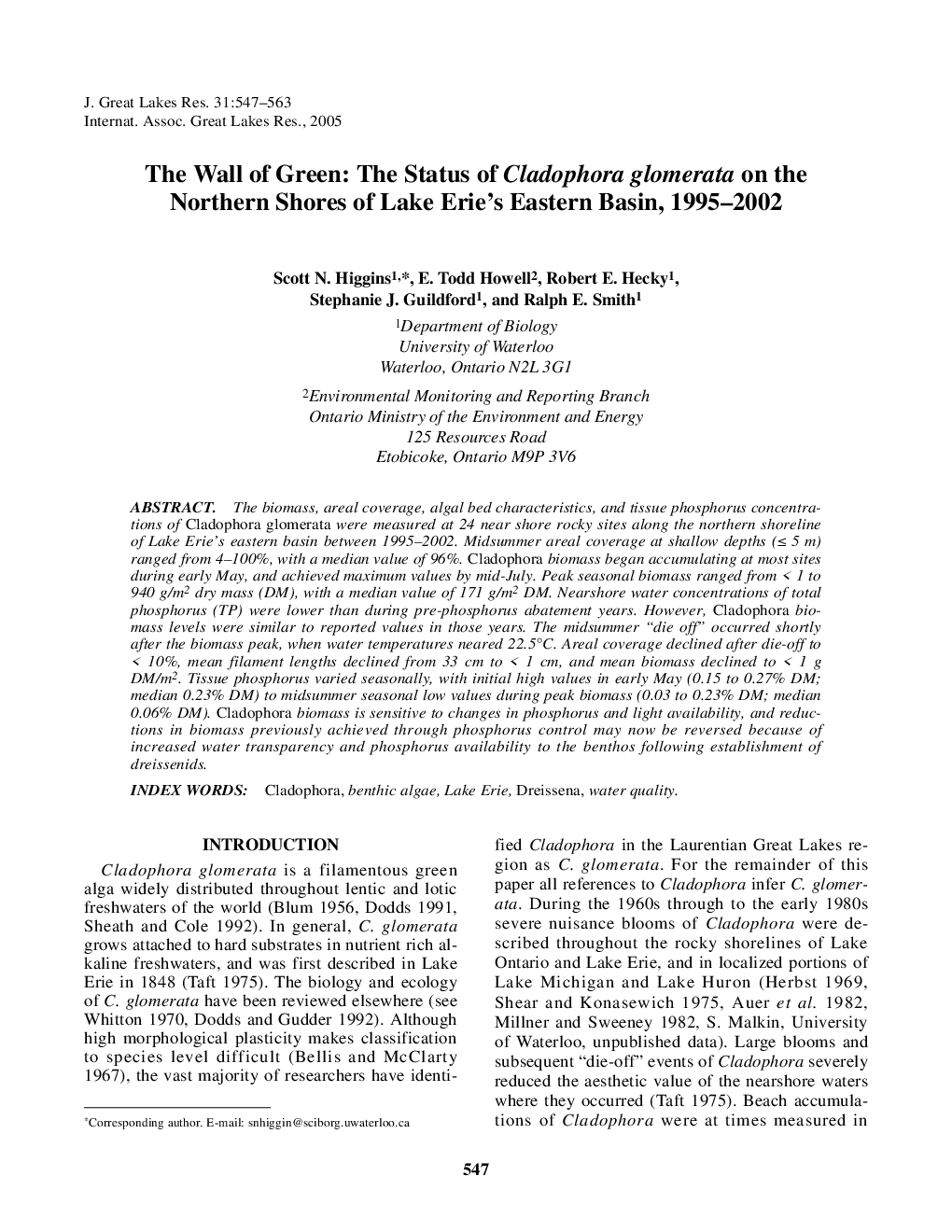| Article ID | Journal | Published Year | Pages | File Type |
|---|---|---|---|---|
| 9450148 | Journal of Great Lakes Research | 2005 | 17 Pages |
Abstract
The biomass, areal coverage, algal bed characteristics, and tissue phosphorus concentrations of Cladophora glomerata were measured at 24 near shore rocky sites along the northern shoreline of Lake Erie's eastern basin between 1995-2002. Midsummer areal coverage at shallow depths (⤠5 m) ranged from 4-100%, with a median value of 96%. Cladophora biomass began accumulating at most sites during early May, and achieved maximum values by mid-July. Peak seasonal biomass ranged from < 1 to 940 g/m2 dry mass (DM), with a median value of 171 g/m2 DM. Nearshore water concentrations of total phosphorus (TP) were lower than during pre-phosphorus abatement years. However, Cladophora biomass levels were similar to reported values in those years. The midsummer “die off” occurred shortly after the biomass peak, when water temperatures neared 22.5°C. Areal coverage declined after die-off to < 10%, mean filament lengths declined from 33 cm to < 1 cm, and mean biomass declined to < 1 g DM/m2. Tissue phosphorus varied seasonally, with initial high values in early May (0.15 to 0.27% DM; median 0.23% DM) to midsummer seasonal low values during peak biomass (0.03 to 0.23% DM; median 0.06% DM). Cladophora biomass is sensitive to changes in phosphorus and light availability, and reductions in biomass previously achieved through phosphorus control may now be reversed because of increased water transparency and phosphorus availability to the benthos following establishment of dreissenids.
Related Topics
Physical Sciences and Engineering
Earth and Planetary Sciences
Earth and Planetary Sciences (General)
Authors
Scott N. Higgins, E. Todd Howell, Robert E. Hecky, Stephanie J. Guildford, Ralph E. Smith,
